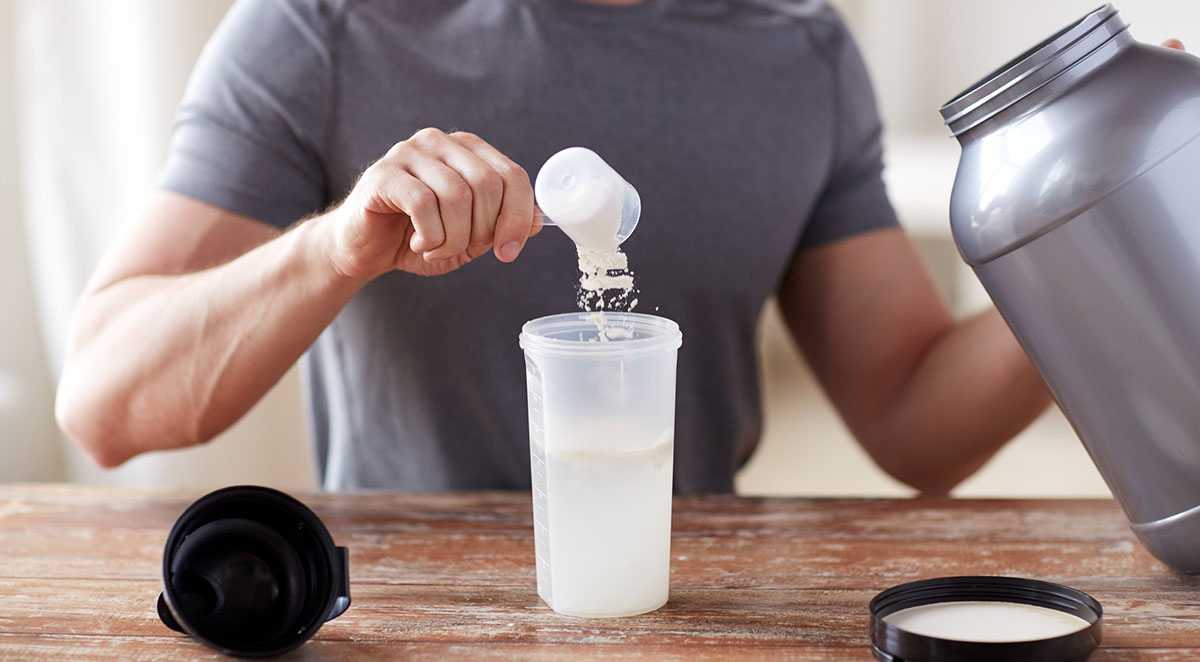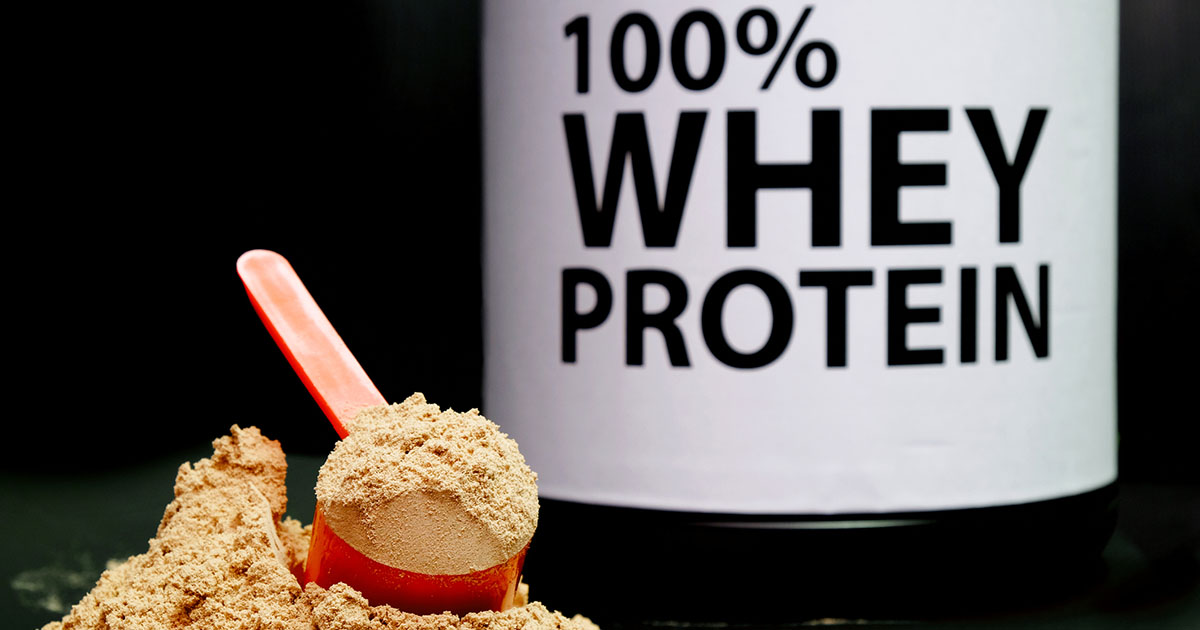The Beginner's Guide To Whey Protein Powder
Protein shakers, dumbells, and workout gear are what you normally see at the gym on any given day. Whether you’re a gymaholic or fitness novice, here is a straightforward guide about the importance of protein powder, the recommended dosages, and the numerous health benefits it has to not only make you feel healthy and invincible, but up your gym game, too.
The Significance Of Protein

Before we dive into the world of protein powder, let’s review the significance of protein and why it is an essential nutrient for the human body. Protein is a critical component of every cell within the body, as it helps build hair, nails, bones, muscles, cartilage, skin, blood, and it repairs tissues as well. Protein also creates enzymes, hormones, and other body chemicals that allow your body to function efficiently and in a healthy manner. Protein is considered a ‘macronutrient,’ along with fat and carbohydrates, meaning the body needs relatively large amounts of it, compared to vitamins and minerals considered ‘micronutrients.’ Unlike carbs and fat, the human body does not store protein, and when it is needed, does not have a reservoir to get its supply from. Therefore, it is crucial for individuals to incorporate a high volume of protein within their diet, at the recommended doses, to ensure they stay healthy and lean.
Curious about whey? Learn more about this incredible protein source and how it is created.
What Is Protein Powder Exactly?

To put it quite simply, protein powder’s roots are in milk. Essentially, milk is comprised of two proteins, casein and whey. Whey protein can be separated from casein in the milk or when it is formed as a byproduct of cheese. Whey protein is also considered a complete protein source as it contains all nine essential amino acids and is low in lactose content, making it incredibly healthy for you and easily digestible for the majority of the population. Whey protein, specifically in the form of hydrolysate, is commonly used in medical protein supplements and infant formulas due to its easy and improved digestibility and reduced allergen potential.
Keep reading to discover all the amazing health benefits protein powder has in store for you!
The Health Benefits Of Protein Powder

Optimum Nutrition Whey Proteinis packed with high nutritional value and can help stabilize and balance the body in multiple ways. Some of the key health benefits of whey protein include that it aids in weight loss, lowers cholesterol, reduces inflammation, has anticancer properties, can help those who have asthma, can aid in preventing cardiovascular disease and controlling blood pressure. Whey protein also enhances antioxidant defense and also helps to manage blood sugar levels for those who have type 2 diabetes. When it comes to aiding weight loss, one study of 158 individuals published in Nutrition & Metabolism, discovered individuals who were given whey protein lost significantly more body fat and had greater preservation of lean muscle compared to those who consumed the control beverage. Whey protein is also more satiating, or filling, more so than other types of protein, and suppresses appetite and calorie consumption. Further studies have shown it also boosts metabolism and burns more fat than regular forms of protein, and helps maintain muscle mass when losing weight.
What Is The Right Dosage To Take?

According to the U.S. Department of Health and Human Services, dosages of protein depend on age and gender. For instance, teenage boys and active men should consume three daily servings or seven ounces of protein a day, and children aged two to six, most women and older individuals should consume two servings or five ounces of protein a day. For older children, teenage girls, active women, and most men, the guidelines recommend two servings or six ounces of protein a day, as part of a healthy and balanced diet. The commonly recommended dose of whey protein powder is twenty-five to fifty grams per day, which is approximately one to two scoops. However, individuals should always follow the instructions on the packaging. Whey protein is also best consumed in a InstaShacker after an intense workout or prolonged activities. Whey protein is also sold as a powder or in supplement form, and the powder can be added to smoothies, yogurts, or simply mixed with water or milk.
The Many Health Benefits Of Whey Protein

Besides weight loss, whey protein has also been shown to lower cholesterol. The British Journal Of Nutrition conducted an experiment on seventy overweight individuals for twelve weeks and found there was a significant decrease in total cholesterol and LDL, or bad cholesterol, over the twelve week period compared to those who took casein protein. Another study published in the International Journal of Food Science and Nutrition discovered whey protein could improve the immune response of children affected by asthma when given whey protein supplements. Another major health benefit associated with whey protein is that research has indicated whey protein can significantly reduce blood pressure in patients with hypertension, and reduce their risk of developing heart disease or stroke. This is due to the angiotensin-converting-enzyme (ACE) inhibitors called lactokinins found in whey proteins, according to the International Dairy Journal.
Keep reading to discover vital information on how whey protein enhances the body’s antioxidant defenses and can help those who have type 2 diabetes.
Why Whey Protein Is Vital For Your Health

In addition to lowering blood pressure and reducing an individual’s chance of developing heart disease, whey protein has been proven to be an effective treatment option for those with type 2 diabetes. Type 2 diabetes is a chronic illness characterized by high blood sugar and an impaired function of insulin within the body. Whey protein has been found to be an effective way to moderate blood sugar levels, as it increases the levels of insulin and the sensitivity to its effects, making it a suitable option for those living with the disease, and is most effective when consumed before or with high-carb meals. This powerful protein also reduces inflammation, as one study discovered that in high doses, whey protein supplements could significantly reduce C-reactive protein (CRP), a key producer of inflammation within the body. Lastly, many studies have proven whey protein enhances antioxidant defenses within the body while decreasing oxidative stress, which could lead to chronic diseases. Specifically, it increases the body’s production of the essential antioxidant glutathione, which is found in limited amounts within the body and other food sources.
Continue reading to find out some of the potential dangers of whey protein, especially when it is consumed in high doses.
The Harmful Effects Of Whey Protein

Yes, whey protein has fantastic health benefits for the body, especially when individuals are trying to lose weight. However, there are a few harmful side effects of whey protein patients should be aware of before they go to their closest grocery store and buy a huge tub of it. It is crucial to note some individuals who are allergic to milk may be specifically allergic to whey and should consult a physician before they begin consuming it. When taken in moderate doses, whey protein has very limited side effects and the body will often respond very well to it. However, when taken in high doses, whey protein can result in stomach pains, cramps, a reduced appetite, nausea, headaches, fatigue, and acne. It is recommended individuals follow the doses on the packaging of the whey protein they purchase, as well as consult a doctor before consuming it to ensure it is the best source of protein for them.
Next, learn more about the three different types of whey, and which one might be the right fit for you.
The Different Types Of Whey

There are three primary types of whey: whey protein concentrate (WPC), whey protein isolate (WPI), and whey protein hydrolysate (WPH). WPC contains lower levels of fat and carbohydrates, with the percentage of protein in it depending on how concentrated the powder is. Lower end concentrates generally have thirty percent of protein, while high concentrations of it have a staggering ninety percent of protein concentration. WPIs are the more refined and processed version of WPC to remove all of the fat and lactose found in WPCs. WPI is on the higher end of protein concentrations, and is approximately ninety percent protein in its content, and is often associated with better muscle gains when compared to casein. WPH is often considered the ‘predigested’ version of whey protein, as this type has already undergone partial hydrolysis, a process necessary for the body to absorb protein. WPH is the easiest form of protein to digest and is relatively gentle on the digestive tract.
Continue reading to learn the correct dosages to consume whey protein to ensure it will be effective for you.
Hopefully, these guidelines gave you a crash course in whey protein, its benefits and how to safely use it to ensure you get healthy and lean in no time. Enjoy your next workout and have a shake on me!